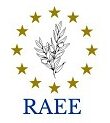Tigray. The Panarchy of War.
Editors: Mirjam van Reisen & Munyaradzi Mawere
Year: 2024
Language: English
Publisher: Langaa, Bamenda
ISBN: 9789956554065
Pages: 442
Dimensions: 229×152 mm
The Tigray War (2020–2022) left a deep and lasting impact not only on Tigray, but also on the wider Horn of Africa. In this second book in a three-part series, the authors examine the devastation wrought by the war on Tigray’s cultural heritage and identity. The deliberate destruction of ancient cultural sites and the assault on the Tigrayan people’s identity have fueled a desire for greater autonomy among the people of Tigray to protect their future. Through the lens of Panarchy, this book explores how the war’s effects extend far beyond Tigray, reshaping the dynamics of the entire region. Crucially, it uncovers Eritrea’s secret role in the conflict, which was deliberately concealed by Ethiopia. Eritrean forces were implicated not only in atrocities, but also in the use of particularly cruel and inhumane sexual violence, intended to break the spirit of the Tigrayan people and erase Tigray as an ethnic and cultural group. This ethnographic research, conducted in collaboration with universities inside and outside Ethiopia, reveals the profound transformations caused by the war, with consequences that will reverberate for years to come. It sheds light on the war’s long-term impact and highlights the urgent need for international attention on the challenges faced by Tigray and the wider region.
Book chapters
- Note on Content and Editorial Decisions by Mirjam Van Reisen & Munyaradzi Mawer
- List of Figures
- Chapter 1: Imagining a World without War: The Activation of Gender as a Critical Concept by Mirjam Van Reisen, Gebru Kidanu, Luana Stocker & Julia Duncan-Cassell
- Chapter 2: A Secret Deal to Conceal: The Eritrean Involvement in the Tigray War by Daniel Tesfa, Mirjam Van Reisen & Kai Smits
- Chapter 3: ‘Cannibals’, ‘Daytime Hyenas’, and ‘Not a Human Race’ – ‘Woyane’: The Semiotic Landscape of the Martyrs’ Commemoration Museum by Daniel Tesfa & Mirjam Van Reisen
- Chapter 4: Negative Stereotyping, Creation of a Threat, and Incitement to Genocide: Discourse Analysis of Hate-speech Disseminated in the Tigray War by Daniel Tesfa & Mirjam Van Reisen
- Chapter 5: “We Pray to God for Peace to be Restored”: The Systematic Destruction of Cultural and Religious Heritage in Tigray by B. G. Kahsay, Moges Gebreegziabher Woldu & Mirjam Van Reisen
- Chapter 6: “Why is God Silent?”: Damage and Destruction of Religious Heritage Sites in East Tigray by Hagos Gebremariam & Amanuel Abrha
- Chapter 7: Deliberate Destruction: Targeting Symbols of Cultural and Religious Identity in Tigray by B. G. Kahsay, Habtom Teklay Shifare & A. H. Tefera
- Chapter 8: ‘The Child of Fire is Ash’: The Lack of a Human Rights Culture by B. G. Kahsay
- Chapter 9: ‘Everything that Held us Together is Now in Ruins’: Exodus and Dissatisfaction after the Peace Agreement in Tigray: A Personal Narrative by Tom Claes
- Chapter 10: War Makes States: From ‘Game Over’ to the Idea of Tigray Statehood by Meressa Tsehaye Gebrewahd, Mirjam Van Reisen & Daniel Tesfa

